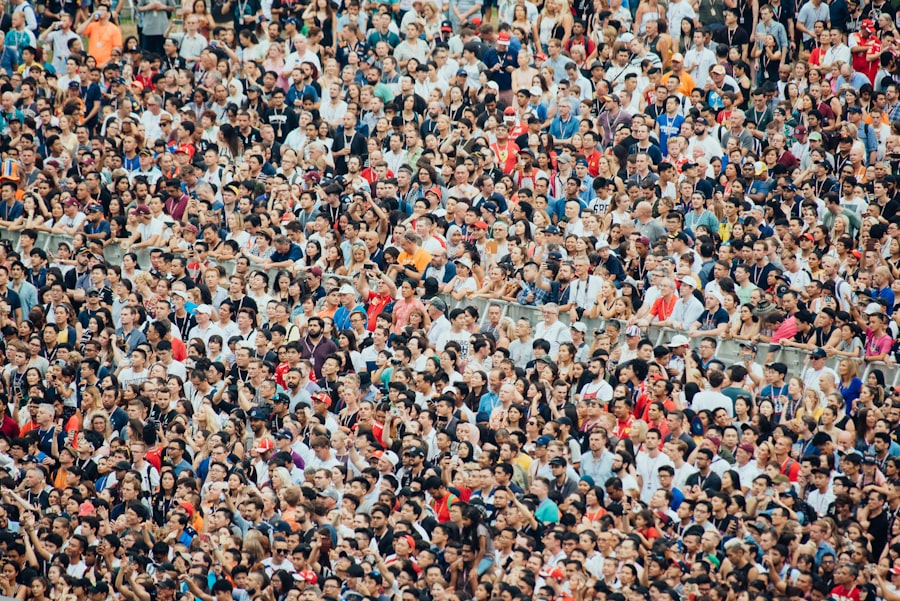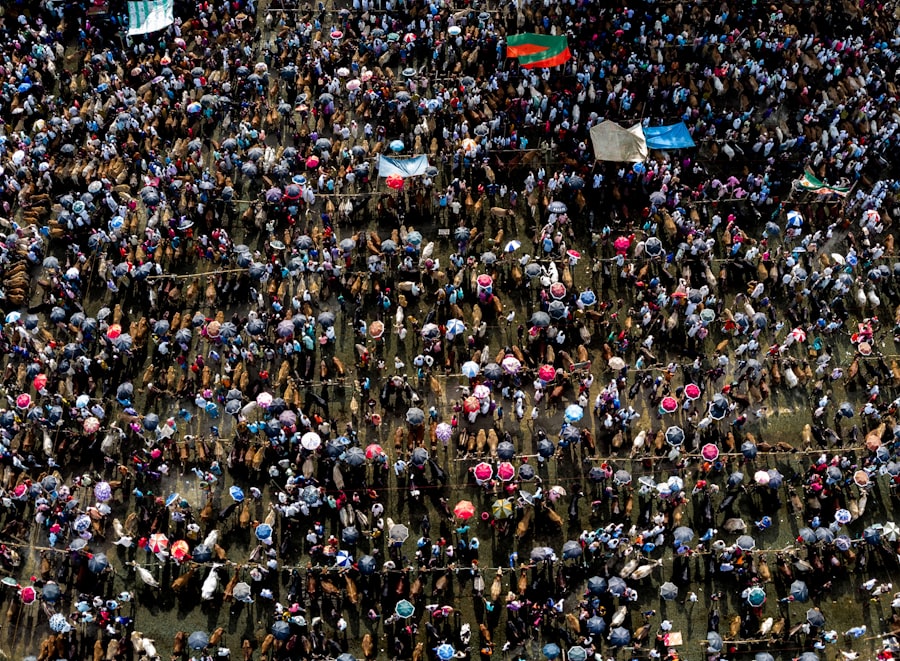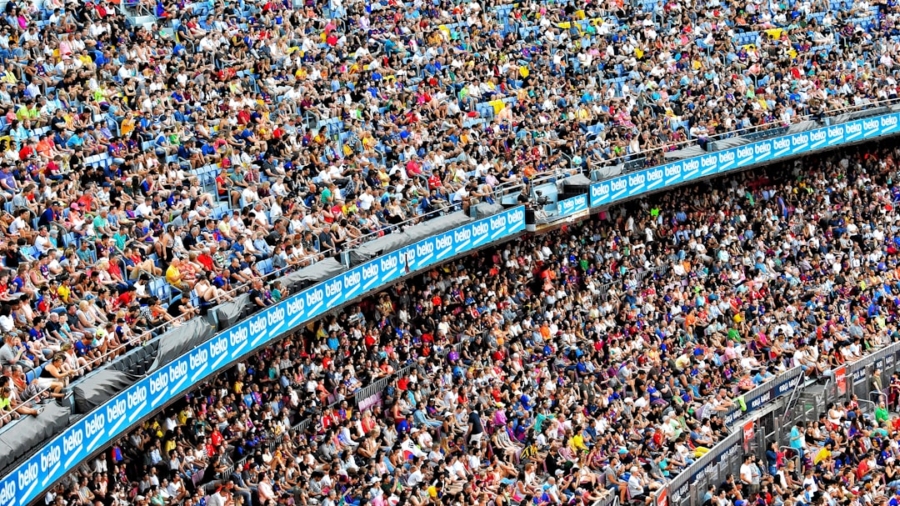In an increasingly urbanized world, managing large gatherings of people has become a critical concern for public safety and event management. Real-time crowd control analytics refers to the use of advanced technologies to monitor, analyze, and manage crowd behavior in real-time.
The integration of data analytics, machine learning, and artificial intelligence (AI) into crowd management strategies has transformed how authorities and event organizers approach crowd safety. The importance of real-time crowd control analytics cannot be overstated. With the ability to process vast amounts of data from various sources—such as surveillance cameras, social media feeds, and mobile devices—stakeholders can gain insights into crowd dynamics that were previously unattainable.
This technology enables proactive measures to be taken before situations escalate into emergencies. For instance, by analyzing foot traffic patterns and identifying bottlenecks in real-time, event organizers can redirect crowds to ensure safety and enhance the overall experience for attendees.
Key Takeaways
- Real-time crowd control analytics utilize AI to monitor and manage crowd behavior in various settings.
- AI plays a crucial role in monitoring crowd behavior by analyzing data from various sources such as surveillance cameras and social media.
- Using AI for real-time crowd control analytics offers advantages such as improved accuracy, efficiency, and the ability to predict and prevent potential issues.
- However, there are challenges and limitations to using AI in crowd control, including potential biases in the data and the need for human oversight.
- Case studies demonstrate successful implementation of AI in crowd control, showcasing its potential to enhance safety and security in public spaces.
The Role of AI in Monitoring Crowd Behavior
Artificial intelligence plays a pivotal role in the realm of crowd control analytics by providing sophisticated tools for monitoring and interpreting crowd behavior. AI algorithms can analyze video feeds from surveillance cameras to detect unusual patterns or behaviors that may indicate potential risks. For example, if a large group of people suddenly begins to move in a particular direction or if there is a sudden increase in noise levels, AI systems can flag these anomalies for further investigation.
Moreover, AI can enhance crowd monitoring through predictive analytics. By leveraging historical data and real-time inputs, AI systems can forecast crowd movements and behaviors based on various factors such as time of day, weather conditions, and event type.
For instance, during a major sporting event, AI can predict peak crowd times at entrances and exits, enabling security personnel to allocate resources more effectively. This predictive capability not only improves safety but also enhances the overall experience for attendees by minimizing wait times and congestion.
Advantages of Using AI for Real-Time Crowd Control Analytics

The advantages of employing AI in real-time crowd control analytics are manifold. One of the most significant benefits is the speed at which data can be processed and analyzed. Traditional methods of crowd monitoring often rely on human observation, which can be slow and prone to error.
In contrast, AI systems can analyze data from multiple sources simultaneously, providing real-time insights that are crucial for effective decision-making. This rapid analysis allows for timely interventions that can prevent dangerous situations from developing. Another advantage is the scalability of AI solutions.
As events grow larger and more complex, the need for robust crowd management strategies becomes even more pressing. AI systems can easily scale to accommodate varying crowd sizes and dynamics without a corresponding increase in manpower. For example, during a music festival with tens of thousands of attendees, AI-driven analytics can monitor crowd behavior across multiple stages and areas simultaneously, ensuring that security teams are informed about potential issues as they arise.
This scalability not only enhances safety but also optimizes resource allocation, allowing event organizers to focus on delivering a positive experience for attendees.
Challenges and Limitations of AI in Crowd Control
Despite the numerous advantages of AI in crowd control analytics, several challenges and limitations must be addressed. One significant concern is the accuracy of AI algorithms in interpreting complex human behaviors. While AI can identify patterns and anomalies in data, it may struggle with nuanced social interactions or cultural differences that influence crowd behavior.
For instance, what may appear as a potential threat in one cultural context could be a normal expression of excitement or celebration in another. This limitation underscores the need for continuous refinement of AI models to ensure they are culturally aware and contextually relevant. Additionally, the reliance on technology raises concerns about system failures or inaccuracies that could lead to misinterpretations of crowd behavior.
A false positive—where an AI system incorrectly identifies a benign situation as a threat—could result in unnecessary panic or overreaction by security personnel. Conversely, a false negative—failing to detect an actual threat—could have dire consequences. Therefore, it is essential for organizations to implement robust validation processes and maintain human oversight in conjunction with AI systems to mitigate these risks.
Case Studies of Successful Implementation of AI in Crowd Control
Several case studies illustrate the successful implementation of AI in crowd control analytics across various settings. One notable example is the use of AI technology during the 2019 UEFA Champions League Final held at Wanda Metropolitano Stadium in Madrid. Authorities employed an AI-driven surveillance system that analyzed video feeds from hundreds of cameras throughout the venue.
The system was able to detect unusual crowd movements and alert security personnel in real-time, allowing them to respond quickly to potential issues such as overcrowding or disturbances. Another compelling case is the deployment of AI analytics during large-scale public events like the New Year’s Eve celebrations in major cities such as New York and Sydney. In these instances, city officials utilized AI algorithms to monitor social media activity alongside traditional surveillance methods.
By analyzing social media posts related to the event, authorities could gauge public sentiment and identify potential flashpoints before they escalated into larger issues. This proactive approach not only enhanced safety but also improved communication with attendees by providing timely updates on crowd conditions.
Ethical and Privacy Considerations in AI-Powered Crowd Control

The integration of AI into crowd control analytics raises significant ethical and privacy considerations that must be carefully navigated. One primary concern is the potential for surveillance overreach. The use of facial recognition technology and constant monitoring can lead to invasions of privacy, particularly if individuals are not aware that they are being observed or if their data is being collected without consent.
This issue is particularly pronounced in public spaces where people may expect a certain level of anonymity. Furthermore, there is the risk of bias in AI algorithms that could disproportionately affect certain demographic groups. If training data used to develop these algorithms is not representative or contains inherent biases, it could lead to discriminatory practices in monitoring and responding to crowd behavior.
For instance, certain groups may be unfairly targeted based on historical data that reflects societal biases rather than actual behavior patterns. To address these ethical concerns, it is crucial for organizations to establish clear guidelines for data usage, ensure transparency in their operations, and engage with communities to foster trust.
Future Developments and Innovations in AI for Crowd Control
As technology continues to evolve, the future of AI in crowd control analytics holds exciting possibilities. One area poised for growth is the integration of augmented reality (AR) with AI systems. By overlaying real-time data onto physical environments through AR devices, security personnel could gain enhanced situational awareness during events.
For example, AR could provide live updates on crowd density or highlight areas requiring immediate attention based on AI analysis. Additionally, advancements in machine learning techniques will likely improve the accuracy and reliability of AI algorithms used in crowd monitoring. As more data becomes available from diverse sources—such as wearable devices or IoT sensors—AI systems will be able to learn from a broader range of inputs, leading to more nuanced understandings of crowd behavior.
This evolution could enable even more sophisticated predictive capabilities, allowing authorities to anticipate issues before they arise with greater precision.
The Impact of AI on Improving Crowd Management
The integration of artificial intelligence into real-time crowd control analytics represents a transformative shift in how we approach crowd management. By harnessing the power of data analysis and machine learning, stakeholders can enhance safety measures while improving the overall experience for attendees at large events. However, as we embrace these technological advancements, it is essential to remain vigilant about ethical considerations and potential biases inherent in AI systems.
As we look toward the future, continued innovation will undoubtedly shape the landscape of crowd control analytics further. The ongoing development of more sophisticated tools will empower authorities and event organizers to create safer environments while respecting individual privacy rights. Ultimately, the impact of AI on improving crowd management will depend on our ability to balance technological advancements with ethical responsibility, ensuring that public safety remains paramount without compromising personal freedoms.
In the rapidly evolving field of technology, artificial intelligence is playing a pivotal role in enhancing real-time crowd control analytics. This advancement is part of a broader trend where AI is being integrated into various aspects of our daily lives, including mobile technology. For instance, the article “The Best Android Apps for 2023” explores how AI-driven applications are transforming user experiences on Android devices. These apps leverage AI to provide smarter, more efficient functionalities, which parallels the way AI is being utilized to manage and analyze crowd dynamics in real-time, ensuring safety and efficiency in public spaces.
FAQs
What is real-time crowd control analytics?
Real-time crowd control analytics refers to the use of data and technology to monitor and manage crowds in real-time. This can include tracking crowd movements, density, and behavior to ensure safety and security in public spaces.
How is AI being used in real-time crowd control analytics?
AI is being used in real-time crowd control analytics to analyze large volumes of data from various sources such as surveillance cameras, social media, and sensors to detect patterns, anomalies, and potential risks in crowds. AI algorithms can also help in predicting crowd behavior and identifying potential security threats.
What are the benefits of using AI in real-time crowd control analytics?
Using AI in real-time crowd control analytics can help in improving public safety, enhancing security measures, and optimizing crowd management strategies. It can also enable authorities to respond more effectively to emergencies and potential security threats in crowded environments.
What are some examples of AI applications in real-time crowd control analytics?
Some examples of AI applications in real-time crowd control analytics include facial recognition technology for identifying individuals in crowds, predictive analytics for anticipating crowd behavior, and automated alerts for detecting potential security risks in real-time.
What are the potential concerns or challenges associated with using AI in real-time crowd control analytics?
Some potential concerns associated with using AI in real-time crowd control analytics include privacy issues related to the use of surveillance technologies, potential biases in AI algorithms, and the need for clear regulations and ethical guidelines for the use of AI in crowd management.

